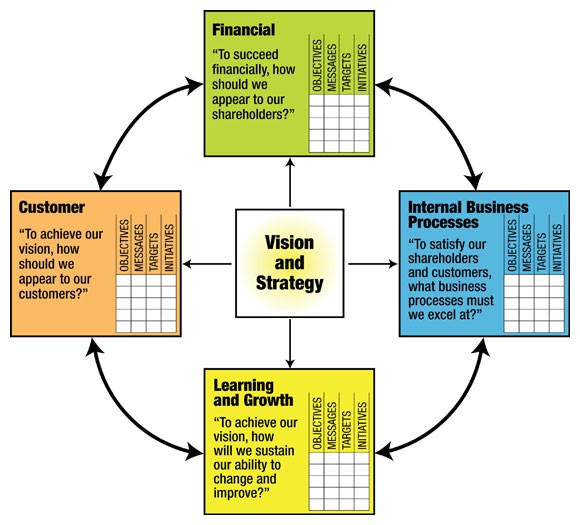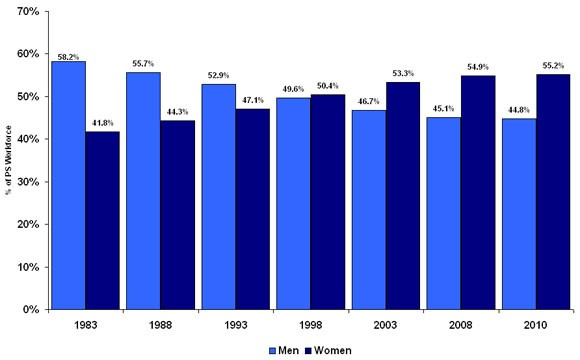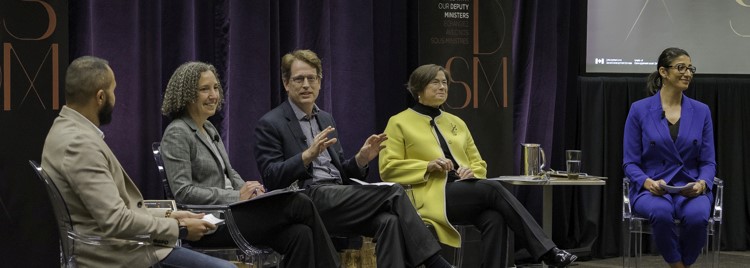Alternative Text and Long Description
- Alternative Text (alt text)
- Alternative Text (alt text) is text that describes an image. It allows people using assistive technologies to access the information conveyed by an image. It also helps search engines better understand the purpose of an image.
- Long Description
- Long descriptions are text versions of the information provided in a complex image or infographic. This description is essential when you cannot describe the content and function of the image in less than 140 characters.
Content Approver
Content Approver
Alternative Text (alt text)
When writing alternative text:
- use as few words as possible;
- limit the text to a maximum of 140 characters (including spaces);
- use the text that is embedded in the image only if it provides enough context; otherwise, write different text that includes more information;
- don't use "image of..." or "graphic of..." to describe the image; screen readers do this already;
- ask the question "If I could not use this image, what would I write instead?".
Examples
Alternative text: First and last name, title, business line
"Graham Flack, Deputy Minister of Employment and Social Development"
Alternative text: General description
"Mount Kilimanjaro in Tanzania, Africa"
Alternative text includes, name, location and date of the event as well as the name of the people present, from left to right.
"Deputy Ministers Maheu, Flack and MacLean (centre) during the Town Hall event held on October 18, 2019."
Long Description
- Must provide a long description when you cannot describe the content and function of the image in less than 140 characters.
- When writing long descriptions, also provide alternative text for the image.
- If a detailed or equivalent explanation of the image appears in the text immediately before or after the complex image, there is no need to provide a long description.
Examples
Example A
Example A
This image explains a number of concepts. It is best described using text that explains each concept and how the concepts relate to one another.
Figure 3. Balanced scorecard approach to monitor key performance indicators.

Long Description
A balanced scorecard is a strategic planning and management system used worldwide to align business activities with an organization's vision and strategy.
Business activities are grouped into four perspectives, all of which are interdependent and come from the vision and strategy. These are learning and growth, internal business processes, financial, and customer. Each has a question associated with it.
Each perspective can be monitored using the following four components: objectives, messages, targets, and initiatives.
- Learning and growth
- To achieve our vision, how will we sustain our ability to change and improve?
- Internal business processes
- To satisfy our shareholders and customers, what business processes must we excel at?
- Financial
- To succeed financially, how should we appear to our shareholders?
- Customer
- To achieve our vision, how should we appear to our customers?
Example B
Example B
This image visually represents information contained in a table. It is best described using the data table from which it was created. The long description would then be the data table used to generate the graphic.
Figure 4. Proportion of men and women in the public service for selected years 1983 to 2010.

Long Description
Figure 4. Proportion of men and women in the public service for selected years 1983 to 2010. Gender (by percentage) 1983 1988 1993 1998 2003 2008 2010 Men 58.2 55.7 52.9 49.6 46.7 45.1 44.8 Women 41.8 44.3 47.1 50.4 53.3 54.9 55.2 - Source:
- Office of the Chief Human Resources Officer, Treasury Board of Canada Secretariat
Note: Includes all tenures. Figures do not include employees on leave without pay.
Content Publisher
Content Publisher
Every image must have an alternative text, also named "alt attribute". This is a requirement of HTML standard. Images without an alt attribute are likely inaccessible.
Adding alternative text for images is the first principle of web accessibility. Computers and screen readers cannot analyze an image and determine what the image presents therefore, descriptive text must be provided for the user that represents the content and function of the image.
Code example – image of Graham Flack provided in the Content Approver section:
<section class="media">
<a href="/eng/support/publishing-guide/images/graham-flack.jpg" title="Graham Flack, Deputy Minister of Employment and Social Development" class="pull-left wb-lbx">
<img src="/eng/support/publishing-guide/images/graham-flack.jpg" class="media-object" alt="Graham Flack, Deputy Minister of Employment and Social Development" /> </a>
</section> Read about Alternative Text


